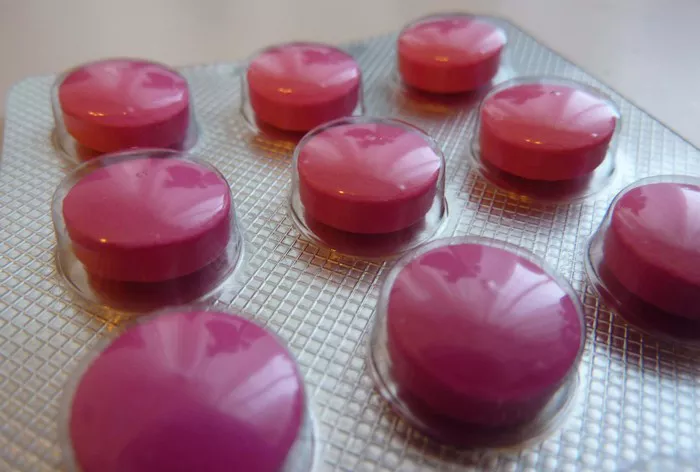Dark spots on the face can be a common concern for many individuals. They can be caused by various factors such as sun exposure, aging, hormonal changes, acne scars, and certain skin conditions. These spots not only affect the overall appearance of the skin but can also lower one’s self-esteem. What cream to use to remove dark spots on the face? Thankfully, there are numerous creams available in the market that claim to reduce or even remove dark spots. However, choosing the right cream can be a daunting task. This article will guide you through the different types of creams, their active ingredients, and how to select the most suitable one for your skin type and specific dark spot concerns.
Understanding Dark Spots
Before delving into the creams, it’s essential to understand what dark spots are and what causes them.
Types of Dark Spots
Melasma: This is a common skin condition that appears as brown or gray – brown patches on the face. It is often triggered by hormonal changes, such as those during pregnancy (hence the name “mask of pregnancy”), taking birth control pills, or hormonal replacement therapy. Melasma is more prevalent in women with darker skin tones.
Age Spots (Liver Spots): Also known as solar lentigines, these are flat, brown spots that typically appear on areas of the skin that are frequently exposed to the sun, such as the face, hands, and arms. They are a result of long – term sun damage and are more common in older individuals.
Acne Scars: After an acne breakout, some people may be left with dark marks or scars on their face. These can be hyperpigmented (darker than the surrounding skin) due to the body’s natural healing process. When the skin is inflamed during an acne episode, the melanocytes (cells that produce melanin) can become overactive, leading to increased pigmentation.
Causes of Dark Spots
Sun Exposure: Ultraviolet (UV) rays from the sun are one of the primary causes of dark spots. Prolonged exposure to UV rays stimulates the production of melanin, the pigment that gives color to our skin. Over time, this can lead to the formation of dark spots.
Hormonal Imbalances: As mentioned earlier, hormonal changes can trigger the development of dark spots, especially melasma. Hormones can affect the activity of melanocytes, causing them to produce more melanin.
Genetics: Some people may be genetically predisposed to developing dark spots. If your family has a history of hyperpigmentation, you are more likely to experience it as well.
Skin Inflammation: Conditions like acne, eczema, or contact dermatitis can cause inflammation in the skin. This inflammation can disrupt the normal functioning of melanocytes and lead to the formation of dark spots.
Active Ingredients in Dark Spot Removing Creams
The effectiveness of a dark spot removing cream largely depends on its active ingredients. Here are some of the most common and effective ingredients found in these creams:
Hydroquinone
How it works: Hydroquinone is a skin – lightening agent that works by inhibiting the enzyme tyrosinase, which is involved in the production of melanin. By reducing the production of melanin, hydroquinone can gradually lighten dark spots over time.
Strength and availability: Hydroquinone is available in different strengths, typically ranging from 2% to 4%. Lower – strength formulations (2%) are often available over – the – counter, while higher – strength versions (4% and above) usually require a prescription.
Precautions: While hydroquinone is effective, it can cause some side effects. These may include skin irritation, redness, dryness, and in rare cases, a condition called exogenous ochronosis, which is a darkening and thickening of the skin. It is important to use hydroquinone as directed and avoid prolonged use.
Vitamin C
How it works: Vitamin C is a powerful antioxidant that has multiple benefits for the skin. In the context of dark spots, it helps to brighten the skin by inhibiting the production of melanin. It also has anti – inflammatory properties, which can help reduce the redness associated with dark spots.
Formulations: Vitamin C can be found in various forms in creams, such as L – ascorbic acid, which is the most stable and effective form. It is often combined with other ingredients like vitamin E and ferulic acid to enhance its stability and effectiveness.
Benefits: Besides lightening dark spots, vitamin C can also improve the overall texture of the skin, boost collagen production, and protect the skin from damage caused by free radicals. It is generally well – tolerated by most skin types.
Retinol
How it works: Retinol is a form of vitamin A that promotes cell turnover. By increasing the rate at which old skin cells are shed and new ones are generated, retinol can help fade dark spots. It also helps to stimulate collagen production, which can improve the skin’s texture and reduce the appearance of fine lines and wrinkles.
Strength and usage: Retinol comes in different strengths, and it is important to start with a low – strength formulation, especially if you have sensitive skin. It may cause some initial skin irritation, such as redness, peeling, and dryness, but these side effects usually subside as the skin adjusts.
Combination with other ingredients: Retinol can be combined with other dark – spot – fighting ingredients like vitamin C or niacinamide for enhanced results.
Niacinamide
How it works: Niacinamide, also known as vitamin B3, has several beneficial effects on the skin. It helps to regulate the production of melanin by blocking the transfer of melanin from melanocytes to keratinocytes (the main cells in the outer layer of the skin). This can lead to a reduction in the appearance of dark spots.
Benefits: In addition to lightening dark spots, niacinamide can also improve the skin’s barrier function, reduce inflammation, and minimize the appearance of pores. It is suitable for most skin types and is often well – tolerated.
Combination potential: Niacinamide can be safely combined with other ingredients like vitamin C, retinol, and hyaluronic acid, making it a versatile ingredient in dark – spot – removing creams.
Kojic Acid
How it works: Kojic acid is a natural skin – lightening agent that is derived from certain fungi. It works by inhibiting tyrosinase, similar to hydroquinone, thus reducing the production of melanin.
Benefits: Kojic acid is a popular choice for those who prefer natural ingredients. It is generally considered to be gentle on the skin and can be effective in lightening dark spots. However, it may not be as potent as hydroquinone in some cases.
Formulations: Kojic acid is often found in creams, serums, and masks. It can be combined with other natural ingredients like licorice root extract or arbutin for enhanced lightening effects.
Arbutin
How it works: Arbutin is a natural ingredient derived from plants such as bearberry, cranberry, and blueberry. It works by inhibiting tyrosinase and converting it into a less active form, thereby reducing melanin production.
Benefits: Arbutin is a gentle alternative to hydroquinone, making it suitable for sensitive skin. It can gradually lighten dark spots and improve the overall complexion. It also has antioxidant properties, which can protect the skin from damage.
Licorice Root Extract
How it works: Licorice root extract contains a compound called glabridin, which has skin – lightening properties. It inhibits the production of melanin by blocking the activity of tyrosinase.
Benefits: Licorice root extract is not only effective in lightening dark spots but also has anti – inflammatory and soothing properties. It can be beneficial for sensitive skin types and can help reduce redness and irritation associated with dark spots.
Different Types of Dark Spot Removing Creams
Whitening Creams
Whitening creams are specifically formulated to lighten the overall skin tone and reduce the appearance of dark spots. They usually contain ingredients like hydroquinone, vitamin C, or kojic acid. These creams are suitable for those with melasma or general hyperpigmentation issues. However, it’s important to note that over – use of whitening creams can lead to uneven skin tone or skin damage if not used as directed.
Spot – Treatment Creams
Spot – treatment creams are designed to target specific dark spots. They often have a higher concentration of active ingredients compared to whitening creams. Ingredients like retinol, niacinamide, or arbutin are commonly used in spot – treatment creams. These creams are ideal for treating age spots or acne scars. You can apply them directly to the affected areas using a cotton swab or your fingertip.
Night Creams
Night creams are formulated to work while you sleep. They often contain ingredients that are more potent or have a slower release mechanism. Retinol is a common ingredient in night creams as it can work overnight to promote cell turnover and fade dark spots. Night creams also usually contain moisturizing ingredients to keep the skin hydrated while you sleep, which is important for the skin’s natural healing process.
Moisturizing Creams with Dark – Spot – Fighting Ingredients
These creams combine the benefits of moisturization with dark – spot – reducing properties. They are suitable for those with dry skin, as dry skin can sometimes make dark spots more noticeable. Ingredients like hyaluronic acid for moisturization are combined with vitamin C or niacinamide to lighten dark spots. This type of cream is a good option for daily use as it helps to keep the skin hydrated and improves the appearance of dark spots simultaneously.
How to Choose the Right Cream for Your Skin Type
Normal Skin
If you have normal skin, you have more flexibility in choosing a dark – spot – removing cream. You can opt for creams with a variety of active ingredients, such as vitamin C, retinol, or niacinamide. Look for a cream that is lightweight and non – greasy, as normal skin doesn’t require excessive moisture.
Dry Skin
For dry skin, it’s important to choose a cream that is rich in moisturizing ingredients. Look for dark – spot – removing creams that contain hyaluronic acid, glycerin, or shea butter. Vitamin C or niacinamide – based creams can be a good choice as they can help lighten dark spots while also providing some moisture. Avoid creams that contain high concentrations of alcohol, as they can further dry out the skin.
Oily Skin
Oily skin types should look for lightweight, non – comedogenic creams. Creams with salicylic acid or niacinamide can be beneficial as they can help control oil production while also reducing the appearance of dark spots. Avoid heavy, greasy creams that can clog pores and exacerbate acne, which can in turn lead to more dark spots.
Sensitive Skin
If you have sensitive skin, it’s crucial to choose a gentle cream. Look for products that are fragrance – free, paraben – free, and hypoallergenic. Ingredients like licorice root extract, arbutin, or low – strength niacinamide can be good choices. Start with a small patch test on a small area of your skin, such as behind your ear or on your inner wrist, and wait 24 – 48 hours to see if there is any adverse reaction.
Tips for Using Dark Spot Removing Creams
Follow the Instructions
Read the instructions on the cream carefully and follow them exactly. This includes the frequency of application, the amount to use, and any specific precautions. For example, some creams may need to be applied once a day, while others may be used twice a day.
Use Sunscreen
Regardless of the type of dark – spot – removing cream you use, it is essential to use sunscreen during the day. Sun exposure can reverse the effects of the cream and cause more dark spots to form. Choose a broad – spectrum sunscreen with a sun protection factor (SPF) of at least 30.
Be Patient
Dark spots take time to fade. It may take several weeks or even months of consistent use of the cream to see significant results. Don’t expect immediate results and be consistent with your application.
Combine with Other Treatments
In some cases, combining a dark – spot – removing cream with other treatments can be more effective. For example, you can combine it with chemical peels, microdermabrasion, or laser therapy. However, it’s important to consult a dermatologist before combining different treatments to avoid any potential adverse effects.
Precautions and Side Effects
While most dark – spot – removing creams are generally safe when used as directed, there are some precautions and potential side effects to be aware of.
Skin Irritation
Some people may experience skin irritation, such as redness, itching, or burning, especially when using creams with potent active ingredients like retinol or hydroquinone. If you experience any of these symptoms, stop using the cream immediately and consult a dermatologist.
Allergic Reactions
In rare cases, individuals may have an allergic reaction to an ingredient in the cream. This can manifest as hives, swelling, or difficulty breathing. If you suspect an allergic reaction, seek medical attention immediately.
Uneven Skin Tone
Over – use or improper use of dark – spot – removing creams can lead to uneven skin tone. This is especially true for creams that contain hydroquinone. To avoid this, use the cream as directed and don’t exceed the recommended duration of use.
Conclusion
Choosing the right cream to remove dark spots on the face requires a good understanding of your skin type, the cause of your dark spots, and the active ingredients in the creams. By considering these factors and following the tips provided, you can find a cream that is both effective and safe for your skin. Remember, patience is key when it comes to treating dark spots, and it’s always a good idea to consult a dermatologist if you have any concerns or if your dark spots are severe or persistent. With the right cream and proper skincare routine, you can achieve a more even and radiant complexion.
Related topics:
What Is the Best Cream to Prevent Stretch Marks?



































